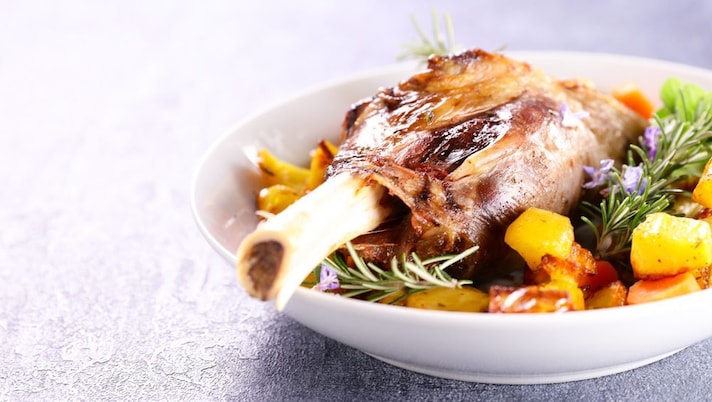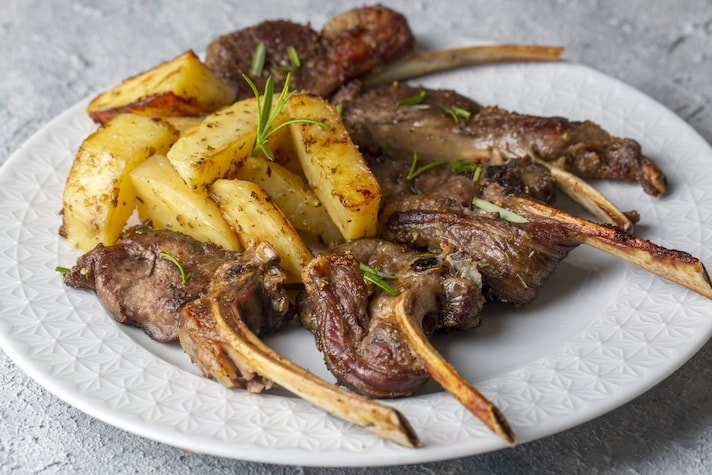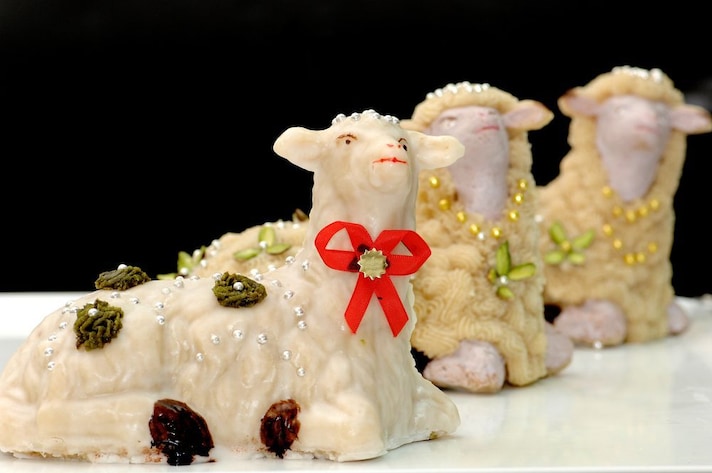Why Do We Eat Lamb During Easter Holidays and How Has This Habit Changed Over Time?
From Achilles to the New Testament, to the tradition of sweet decorated lambs: everything you need to know about the connection between lamb and Easter.
;Resize,width=742;)
There are very few Easter gastronomic traditions that create such a stir: we are talking about the custom of eating lamb at Easter, strongly opposed by animal rights activists, vegans, vegetarians but often also by "omnivores". And yet we have been eating lamb for centuries, just like the less cute pig (even in small versions): but why does this custom exist? Today we do not want to address ethical issues but tell you about the link between this type of meat and traditions, not only Christian ones. This is why we eat lamb at Easter.
Why We Eat Lamb During Easter
The lamb, for the Christian religion and even before that for the Jewish one, is the symbol of sacrifice par excellence and as such is cited several times both in the Old Testament and in the New. The Agnus Dei is an expression based on the Gospel according to John (1, 29.36) which means Lamb of God: it refers to Jesus Christ in his role as sacrificial victim for the redemption of the sins of humanity. The lamb, in the Christian tradition, is seen from this perspective: it is a sacrifice of an animal that also represents purity and innocence.
As for the Old Testament, in the book of Exodus God not only invites Moses and Aaron to procure a lamb for each family during the Jewish Passover period, but also explains how it should be cooked: "They shall eat its flesh roasted over the fire; with unleavened bread and bitter herbs they shall eat it. You shall not eat it raw, nor boiled in water, but only roasted over the fire with its head, legs and entrails." Furthermore, for ancient Judaism, according to some theologians involved in explaining tradition, the blood of the lamb was not a symbol of salvation from sin but of liberation from slavery: it was precisely with the blood of the lamb that the Jews had to stain their doors so as not to be involved in the wrath of God that would be unleashed on the Egyptians, guilty of having reduced the beloved people to slavery.

In the New Testament, however, it is John the Baptist who welcomes Jesus with these words: "Behold the Lamb of God, who takes away the sin of the world", highlighting and almost presaging the sacrificial role for the redemption of humanity. In general, in all Christian cultures the lamb is seen as a symbol of purity, innocence but also fragility.
Even Before Christianity: Achilles the Cook, Pelide
If you do a more in-depth research, however, you discover that the lamb is not only linked to Christian culture: even in the Iliad and the Odyssey lambs and goats are mentioned on many occasions. It is in particular Achilles, the demigod hero of the Trojan War, who is often described as busy cooking the meat of these animals. After all, it should not be surprising: Greece, like Sicily, Calabria, but also the Balkan countries, was an area dedicated to pastoralism, specialized precisely in the breeding of these animals.
Sacrifice Disappears, But Tradition Remains
Throughout history, however, Christian authorities have tried to separate the idea of ritual sacrifice from the consumption of lamb, starting from the debate of Laodicea (310-390 AD) and up to the last warning of Pope Benedict XVI in 2005, also due to the renewed sensitivity towards animals. But if it is no longer the "duty" of believers to sacrifice the lamb at Easter, the tradition remains well rooted, with many local recipes becoming symbols of their territories of reference.

What Kind of Lamb is Eaten Nowadays?
In the United States, there are several different types of lamb, each with distinct characteristics. These include suckling lamb, white lamb, mature lamb, and lamb (sottanno or castrato). Here's a breakdown of the differences between these types:
- Suckling Lamb (also known as Abbacchio): Suckling lamb is slaughtered at a very young age, typically between 21 and 28 days old. It is fed exclusively on its mother's milk, which gives it a delicate flavor but lower nutritional value compared to other lamb types. Suckling lamb tends to have a lower protein content, making it less nutritionally dense than the young lamb, but it is prized for its tenderness and mild flavor. In the U.S., this type of lamb is often considered a delicacy and is used for specific, high-end dishes.
- White Lamb: White lamb is slaughtered between 45 and 60 days of age, and it’s raised on a mixed diet of milk and pasture. This type of lamb has a higher nutritional value than suckling lamb, but it can have a bit of variation in terms of meat quality—sometimes it’s leaner, and other times it may be too fatty. The balance of flavor and texture depends on the lamb's diet and overall care, making it a versatile choice for different cooking methods.
- Mature Lamb (also known as Grey Lamb or 100-Day Lamb): Mature lamb, or "grey lamb," gets its name from the slight change in the color of the meat as it ages, typically being slaughtered between 2 to 6 months old. This lamb primarily eats pasture, which contributes to firmer meat that is more nutritious. Because of its longer lifespan and diet, mature lamb tends to have a richer flavor and a firmer texture. It is ideal for slow-roasting and other methods that highlight its bold, meaty taste.
- Lamb: The lamb category includes two subtypes: sottanno lamb is slaughtered between 8 to 10 months of age. It lives mainly on pasture, resulting in meat that is full of nutrients with a richer flavor and firmer texture. Castrato lamb is slaughtered at 15 to 18 months of age. Known for its full flavor and intense taste, this lamb is less watery, and the meat tends to have a richer, more complex flavor profile. It’s considered a delicacy in various Italian regions, particularly in southern Italy, and is growing in popularity in the U.S. as well.
Choosing the Right Lamb
In general, when selecting lamb, it’s recommended to choose young lamb, which has a milder, more tender taste, and a higher nutritional profile. Young lambs are usually separated from their mothers at a later stage, which helps ensure they have a richer flavor and more nutritional content. In the U.S., lamb from organic, biodynamic, or free-range farms is often preferred. This ensures that the animals have been treated humanely and have not been subjected to unnecessary stress or poor living conditions. Additionally, choosing lamb from sustainable, ethical sources is important to many consumers who are conscious of animal welfare and environmental impacts.
Marzipan Lambs
Marzipan lambs are a traditional Easter treat, made from sweet almond paste molded into the shape of a lamb, symbolizing purity and sacrifice. Popular in European countries, especially during Easter, these lamb-shaped confections are often decorated with vibrant colors or edible details. They’re a festive and symbolic way to add sweetness to Easter celebrations, and can be found in gourmet stores or made at home using marzipan.

;Resize,width=767;)
;Resize,width=712;)
;Resize,width=712;)
;Resize,width=712;)
